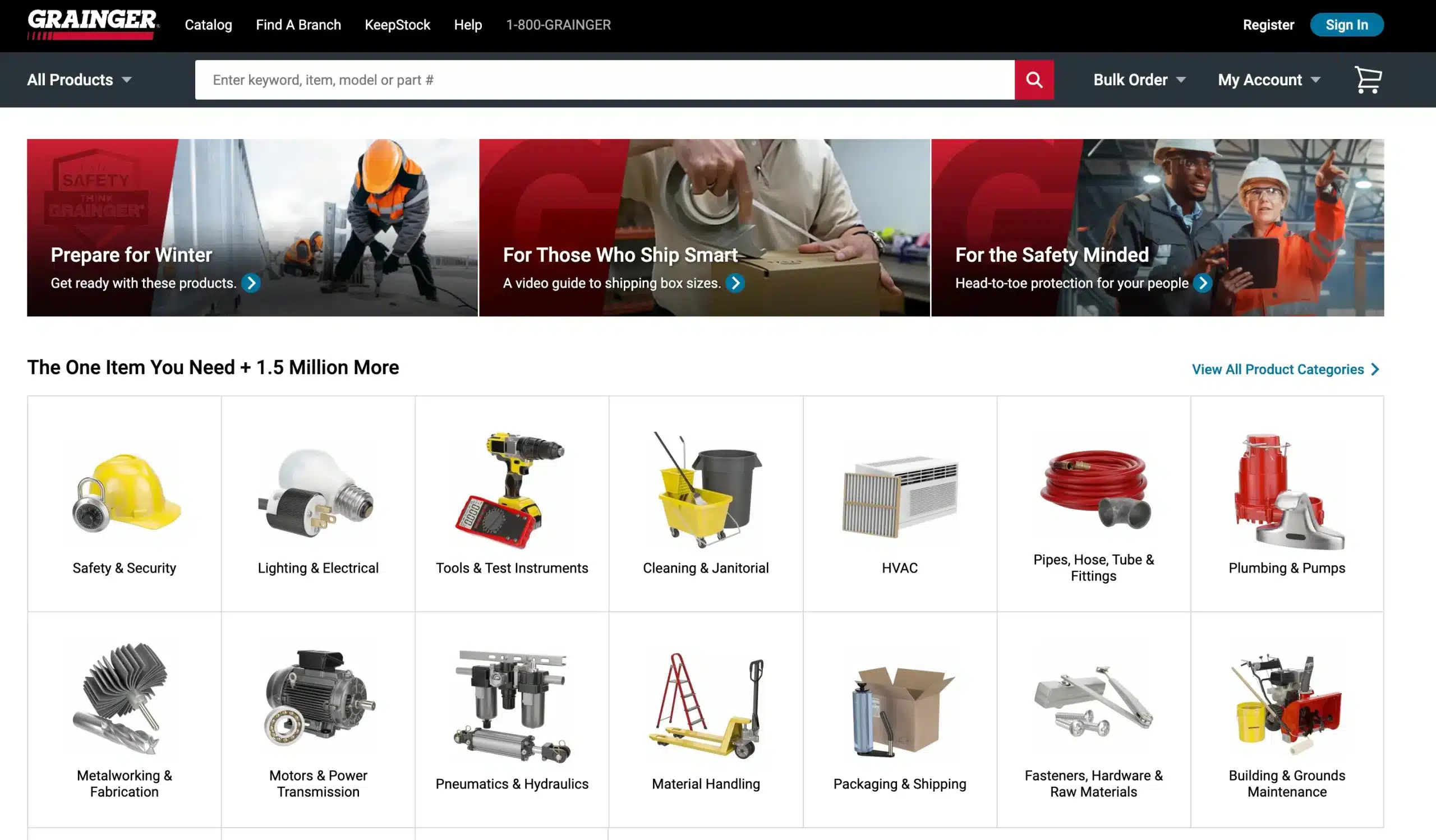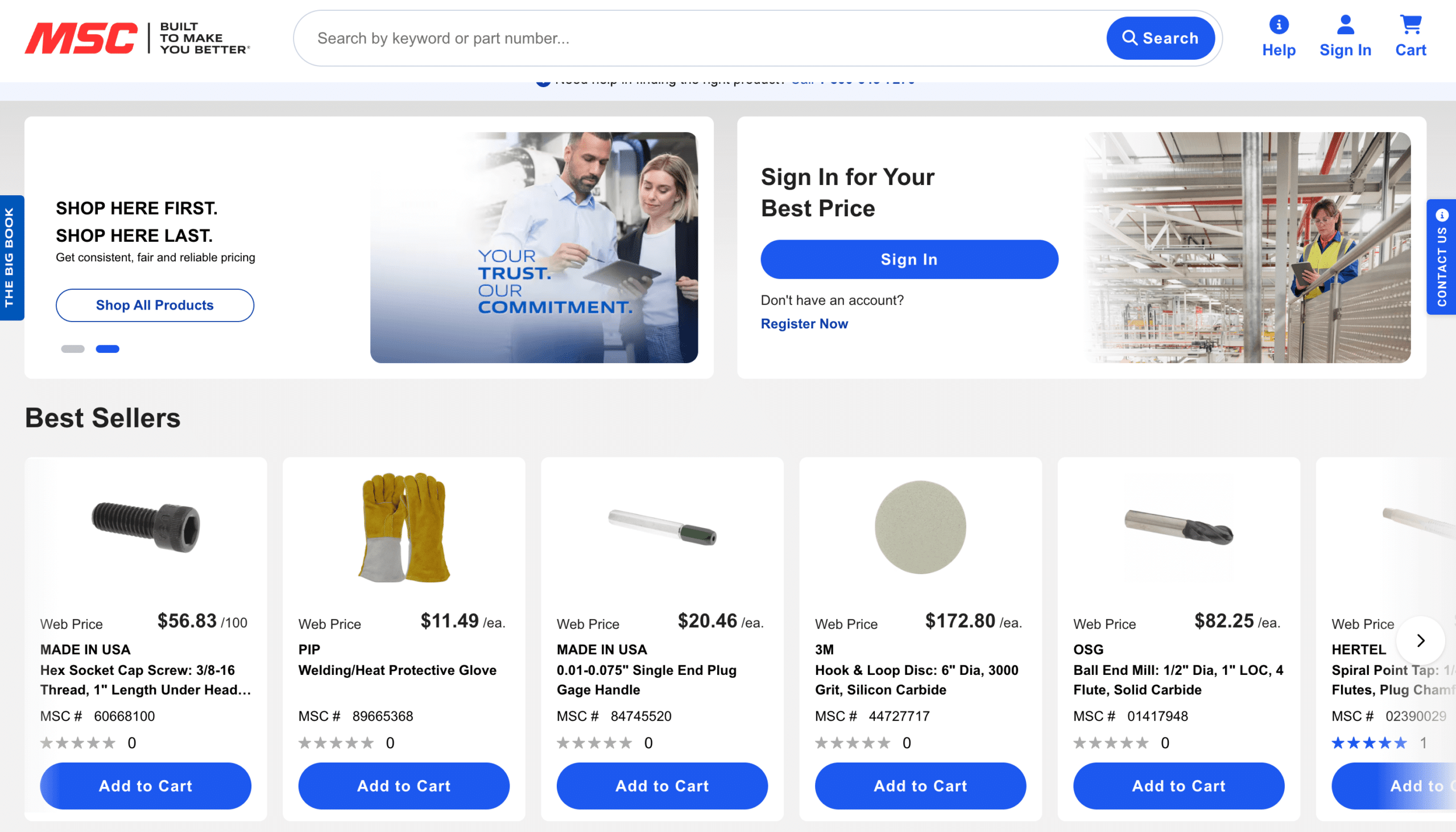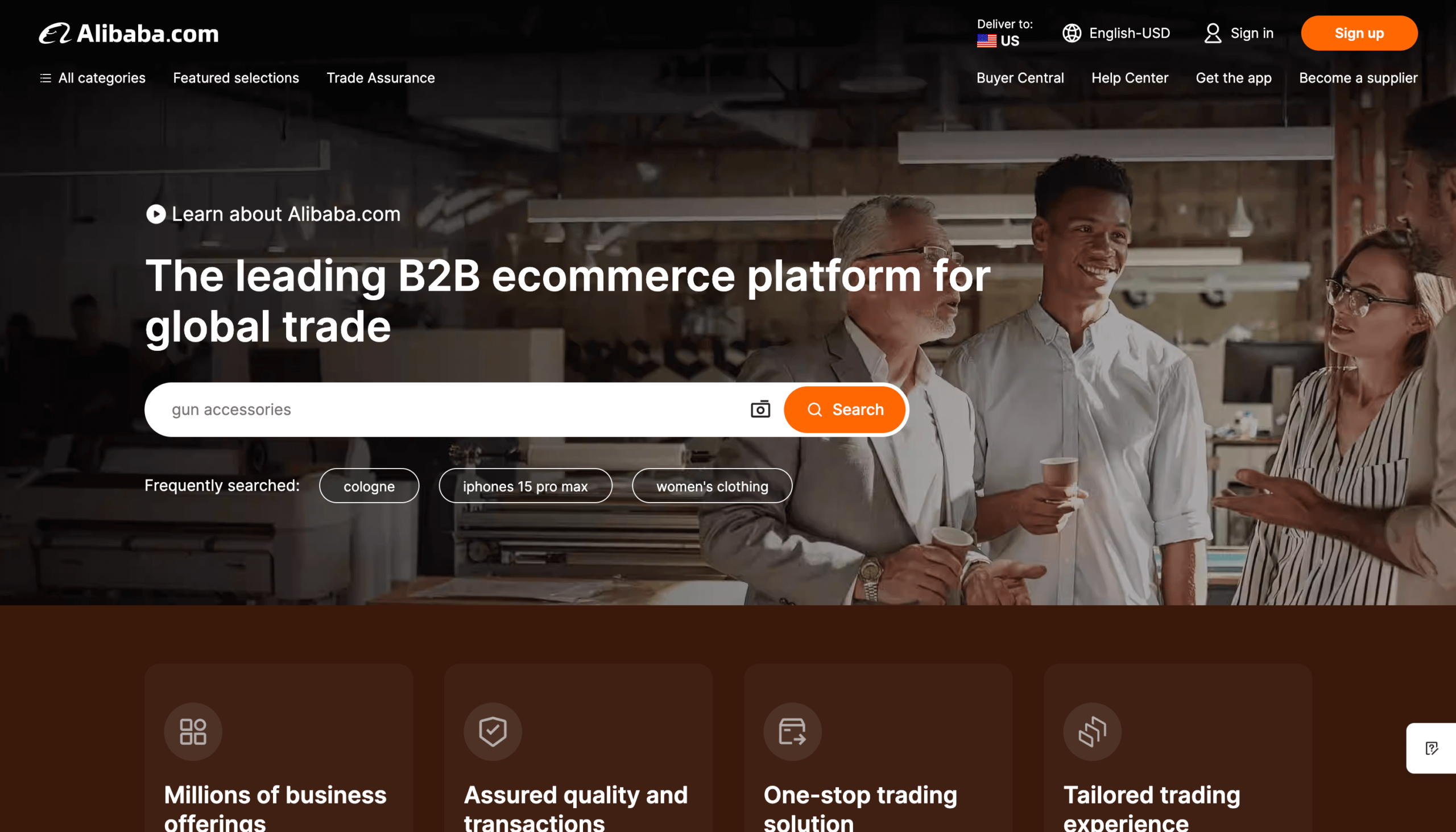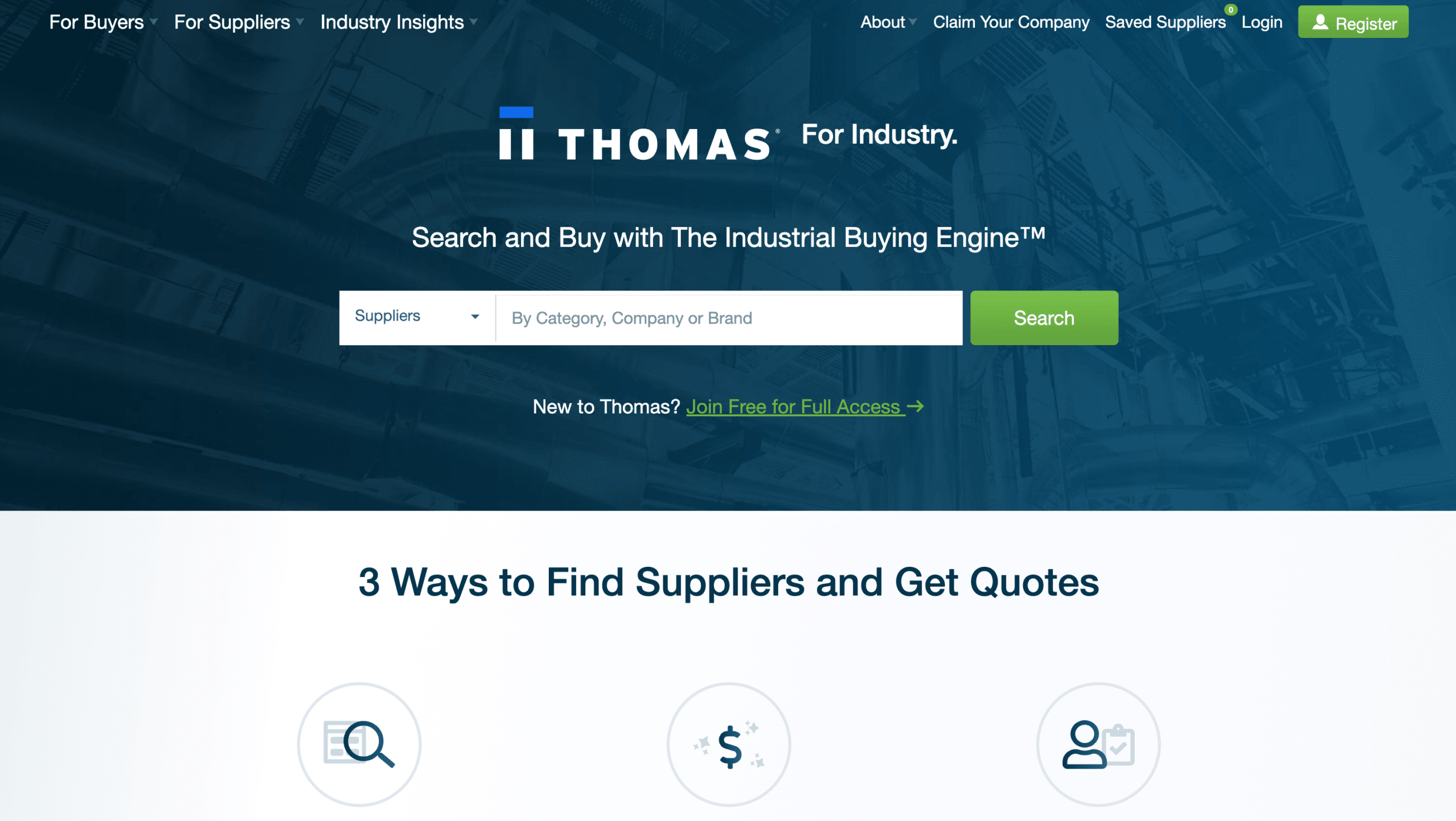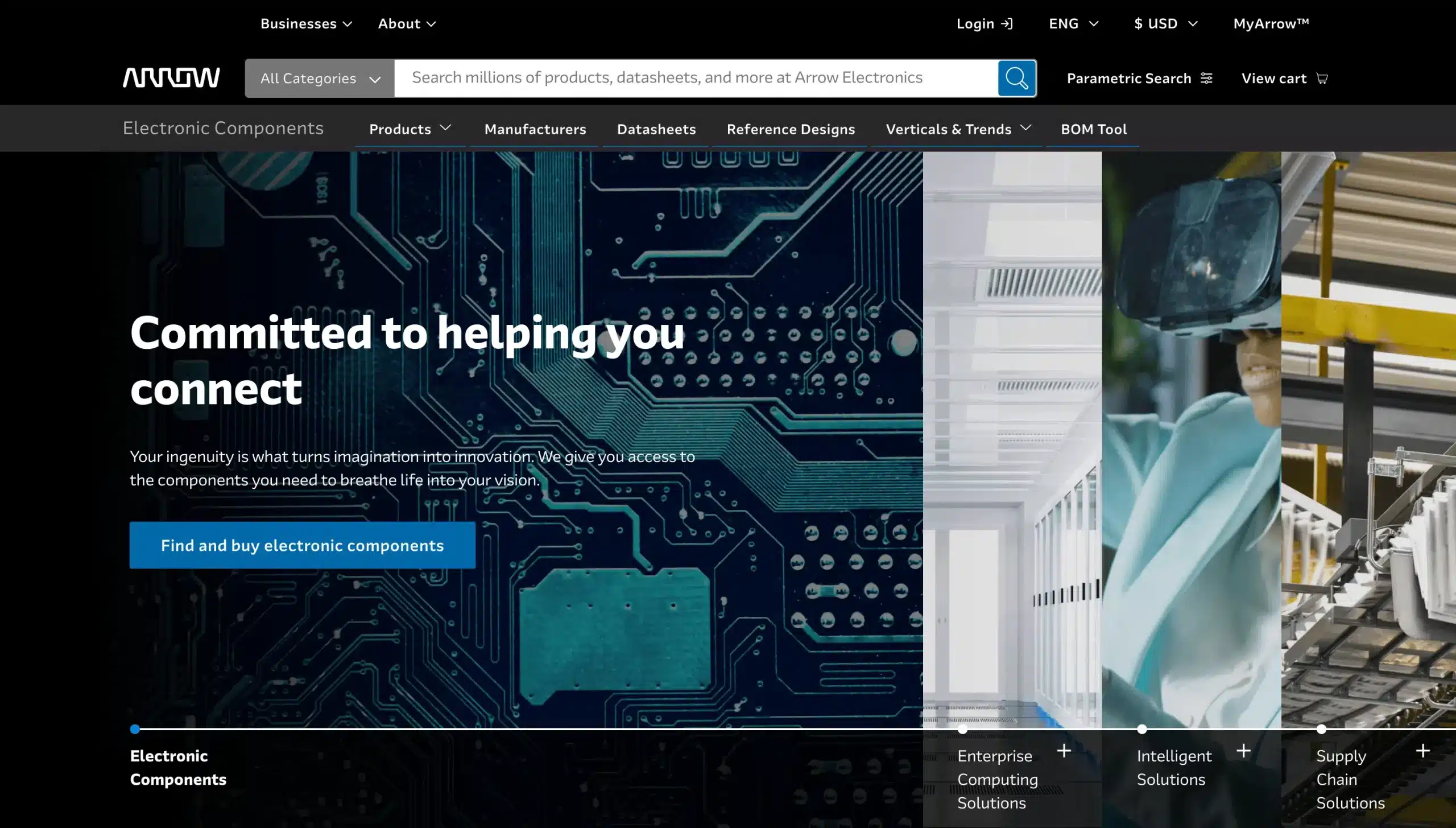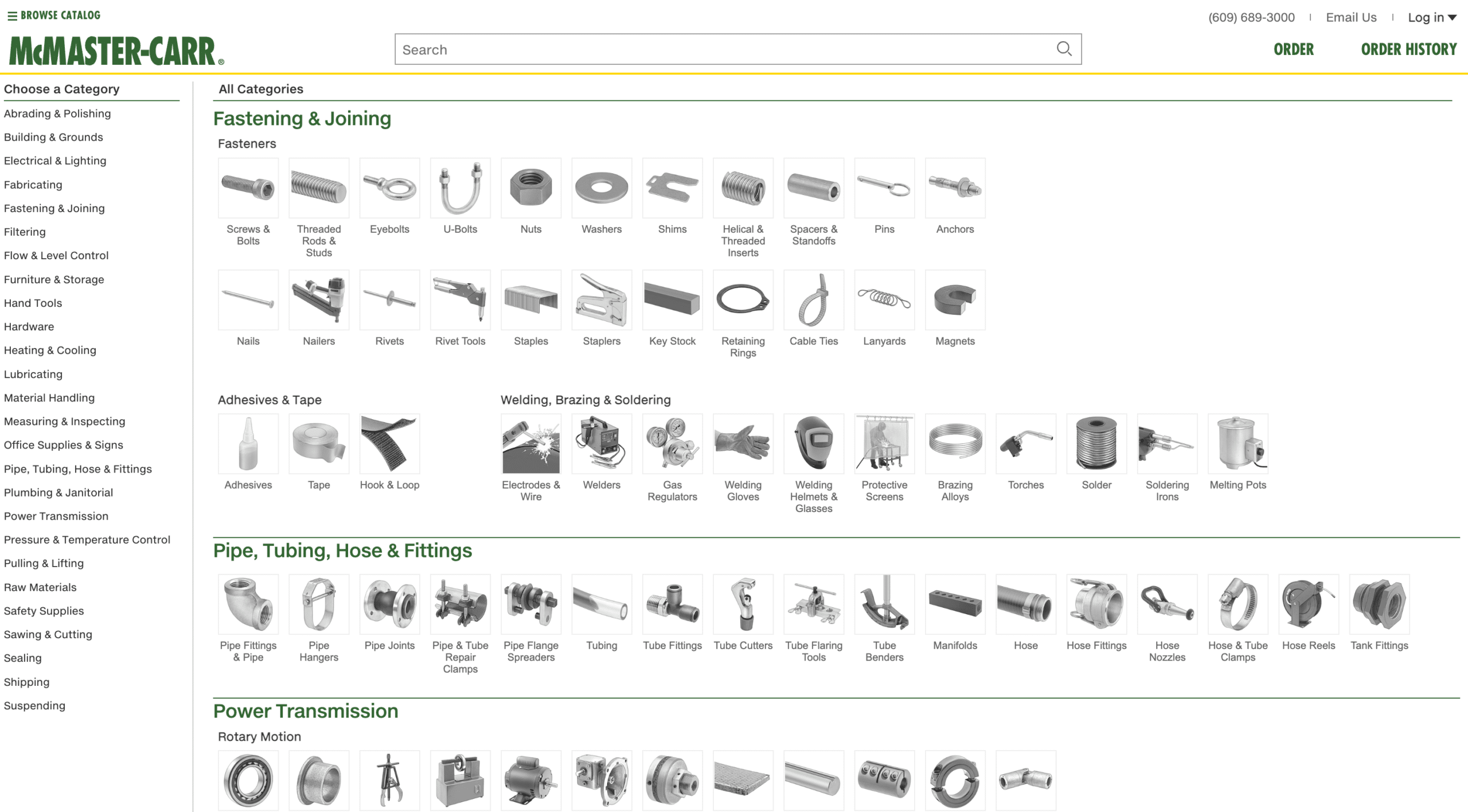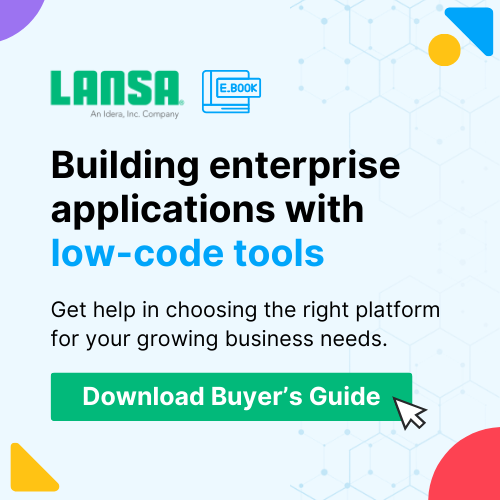In today’s digital landscape, top-notch B2B eCommerce website development is no longer a luxury but a necessity for businesses seeking to thrive. With the increasing adoption of online platforms and the growing preference for self-service purchasing experiences, a strong digital presence has become crucial.
The global B2B eCommerce market, valued at approximately $18.67 trillion in 2023, is on an upward trajectory with a projected CAGR of 18.2% from 2024 to 2030, driven by increased digital adoption and evolving buyer preferences [1]. Moreover, with nearly 75% of B2B buyers and sellers preferring online shopping to traditional sales processes, businesses recognize that the right B2B eCommerce website development can streamline operations and improve customer satisfaction [2].
This comprehensive guide explores the essential components and strategies for B2B eCommerce website development that drives sales, enhances customer satisfaction, and positions your business for long-term growth.
Key Insights
- Competitive advantage: Successful B2B eCommerce website development can provide a competitive advantage by offering a seamless purchasing experience, personalized recommendations, and efficient order management.
- Data-driven decision-making: Effective B2B eCommerce website development incorporates robust analytics tools, enabling businesses to make informed decisions based on real-time data about customer behavior, sales trends, and inventory management.
- LANSA Commerce Edition: A comprehensive solution that integrates with existing systems and delivers a customizable, secure online storefront, LANSA Commerce Edition empowers businesses with B2B eCommerce website development that meets their unique needs
Read on to learn the key aspects of B2B eCommerce website development.
The B2B eCommerce Market Landscape
The B2B eCommerce landscape is rapidly evolving, driven by key factors that are crucial for effective B2B eCommerce website development:
- Rising B2B buyer expectations: Today’s B2B buyers expect consumer-grade online experiences, demanding intuitive interfaces and self-service options.
- Technological advancements: Cloud-based solutions, secure payment gateways, and advanced analytics tools are facilitating easier development and management of online sales channels.
- Globalized marketplace: B2B eCommerce platforms are enabling businesses to connect with suppliers and customers worldwide, creating new growth opportunities.
These factors are fueling significant market growth. According to Grand View Research, the global B2B Commerce market size was valued at $18.67 trillion in 2023, with a projected CAGR of 18.2% from 2024 to 2030 [1].
B2B Website Development Essentials
Successful B2B eCommerce website development requires careful planning and execution. Here are some B2B website best practices to consider before designing a B2B website:
Set Goals
Before diving into B2B eCommerce website development, it’s important to establish clear, measurable goals. These objectives should align with your overall business strategy and address specific pain points in your current operations. Are you looking to increase sales, expand your customer base, or improve operational efficiency? Perhaps you’re aiming to enter new markets or launch a new product line.
Whatever your goals for B2B eCommerce website development, they should be SMART: Specific, Measurable, Achievable, Relevant, and Time-bound. For instance, you might set a goal to increase online sales by 30% within the first year, or you can aim to reduce order processing time by 50% through automation.
Know Your Competition
Understanding your competition is vital in B2B eCommerce website development. Conduct a thorough competitive analysis to identify who your main competitors are, what they’re offering, and how they’re positioning themselves in the market. Look at their websites, pricing strategies, product ranges, and customer service offerings.
Pay attention to their strengths and weaknesses to inform your own B2B eCommerce website development. What are they doing well that you could learn from? Where are they falling short, and how can you capitalize on these gaps? This analysis will help you differentiate your offering and create a unique value proposition for your B2B eCommerce website.
Choose the Right eCommerce Platform
Selecting the right eCommerce platform is a critical decision. It will significantly impact your B2B eCommerce website development process. Consider factors such as scalability, integration capabilities, and cost. LANSA Commerce Edition is a powerful and flexible B2B eCommerce website development platform that can meet the diverse needs of B2B businesses, offering a comprehensive set of features, including:
- Seamless ERP integration
- Advanced search and filtering
- Customizable pricing
- Personalized shopping experiences
- Robust security
- Scalability
Learn more about LANSA Commerce Edition.
Successful B2B eCommerce website development ensures a seamless and efficient user experience. Here are 15 essential steps to guide you through the process of B2B eCommerce website development. For additional insights, check out these eCommerce app development tips.
User-Friendly Interface
First impressions matter. A user-friendly interface is the cornerstone of B2B eCommerce website development. Clear categories, a logical layout, and straightforward navigation menus are essential. The goal is to minimize the number of clicks required to reach a product or complete a transaction, enhancing the overall user experience.
Responsive Design
Responsive design is a must in B2B eCommerce website development. Modern B2B eCommerce sites must be accessible and functional across all devices, including desktops, tablets, and smartphones. This ensures that users have a consistent experience regardless of the device they use, which is important for maintaining engagement and driving conversions.
Security
Security is a top consideration in B2B eCommerce development. Implement robust security measures to protect sensitive customer data and transactions. This includes SSL certificates, secure payment gateways, and conducting regular security audits. Effective B2B eCommerce website development prioritizes security to maintain customer confidence and safeguard business operations.
Speed
The best B2B websites are fast. Website speed is an important factor in user experience and SEO. A slow website can frustrate users and lead to higher bounce rates. Optimize your website’s performance by minimizing load times and ensuring fast page speeds. This can be achieved through efficient B2B eCommerce website development, image optimization, and using a reliable hosting provider. Quick loading times can transform good B2B websites into great ones.
Robust Product Catalog
A comprehensive product catalog is essential for business-to-business eCommerce websites. It should be well-organized and provide users with all the information they need to make informed purchasing decisions. During B2B eCommerce website development, make sure to include features like:
- Product images: Include high-quality product images from multiple angles to showcase the products’ features and benefits.
- Specifications: Provide detailed product specifications that are relevant to your B2B audience. This could include technical details, dimensions, materials, and compliance standards.
- Videos: Consider incorporating product videos to demonstrate functionality and provide a more immersive experience for buyers.
Advanced Search and Filtering Options
Developing a successful eCommerce B2B platform requires understanding B2B buyers’ specific needs and requirements. Implement advanced search and filtering to allow them to quickly find the products they’re seeking. Look for filters by category, brand, price range, product features, and technical specifications in a B2B eCommerce website development platform.
Custom Pricing Options
B2B pricing is more complex than simple retail pricing, and it is a key aspect of B2B eCommerce best practices. During B2B eCommerce website development, make sure to include custom pricing options:
- Bulk discounts: Offer automatic or tiered discounts for larger order quantities.
- Custom price lists: Create custom price lists for specific customer segments or contracts.
- Exclusive promotions: Run targeted promotions and discounts for specific product categories or customer groups.
Personalized Shopping Experience
Create a personalized shopping experience by offering intuitive recommendations and promotions tailored to a shopper’s browsing history, preferences, and purchasing behavior. This can make the shopping experience more relevant and engaging. Effective B2B eCommerce website development involves implementing personalized features to foster customer loyalty and maximize conversions. Learn how to enhance customer experience with LANSA Commerce Edition.
Customization
Cater to the specific needs of your B2B customers by offering customization options as part of your B2B eCommerce site. This could include support for bulk ordering, saved shopping carts, custom order forms, and pre-configured product bundles tailored to specific industries or customer segments.
Connectivity
In B2B eCommerce website development, ensuring connectivity is crucial. Your B2B eCommerce website should connect with existing ERP systems, CMS platforms, accounting software, and other essential tools. This integration streamlines operations and ensures a seamless flow of information across different systems.
Analytics and Reporting
Incorporating robust analytics is a key part of B2B eCommerce website development. Track website traffic, user behavior, and conversion rate using analytics tools. Analyze this data to gain valuable insights into customer behavior, identify areas for improvement, and optimize your B2B eCommerce website for better performance and greater ROI. Learn how to maximize ROI with LANSA.
Smooth Payments
Ensuring a user-friendly payment process is crucial in B2B eCommerce website development. Provide your B2B customers with a variety of secure and convenient payment options. This could include credit card processing, ACH payments, net terms for approved accounts, and integration with popular B2B payment platforms.
Powerful SEO Features
Use SEO best practices, including keyword optimization and high-quality content, to improve your search engine rankings. Powerful SEO features should be part of your B2B eCommerce website development platform and are essential for driving organic traffic to your B2B e-commerce websites.
Order Management System
A robust order management system is a vital component of B2B eCommerce website development. This system should allow customers to track their orders in real time, manage returns, and access order history. Features such as saved shopping carts and quick reordering functionalities can streamline the purchasing process for repeat customers.
Good Customer Support
In B2B eCommerce website development, integrating customer support is essential. Offer multiple support channels, including live chat, email, and phone support, to ensure customers can reach you easily.
8 Best B2B eCommerce Website Examples
In today’s digital landscape, top-notch B2B eCommerce website development is no longer a luxury but a necessity. Here are some B2B site examples from industry leaders who excel in B2B eCommerce web development:
Grainger
Grainger prioritizes the user experience with a clean and intuitive interface. Grainger offers a self-service portal with features like account management, order tracking, and reorder capabilities, all designed to streamline the buying process for businesses. This makes Grainer a standout example in B2B eCommerce website development.
MSC Industrial Supply
MSC goes beyond product sales, providing valuable resources for their customers. Their website offers a library of technical content, including CAD drawings, product specifications, and safety data sheets. This focus on customer education fosters trust and strengthens relationships with buyers, showcasing effective B2B eCommerce website development.
Fastenal
Fastenal prioritizes personalization with its B2B eCommerce website. They leverage customer data to offer targeted product recommendations and promotions, catering to the specific needs of each business.
Alibaba
Alibaba offers a vast selection of products, competitive pricing, and a variety of payment options. Alibaba also provides tools to help businesses manage their orders, track shipments, and communicate with suppliers, making it a leader in B2B eCommerce website development.
ThomasNet
ThomasNet is a leading online platform for sourcing industrial products and services. Their website features a comprehensive product directory, supplier profiles, and industry news. ThomasNet also offers tools like RFQ posting and supplier matchmaking to facilitate business connections, demonstrating effective B2B eCommerce website development.
Office Depot
Office Depot offers a seamless B2B buying experience with features like bulk ordering, custom pricing, and contract management. Their website also offers tools like inventory management and customizable product lists to streamline purchasing workflows.
Arrow Electronics
Arrow Electronics is a leading distributor of electronic components and offers a comprehensive online platform for B2B buyers. Their website features a powerful search engine, product catalogs, and technical support resources, showcasing top-tier B2B eCommerce website development.
McMaster-Carr
McMaster-Carr is known for its extensive product catalog and fast shipping times. Their website offers a user-friendly interface and advanced search capabilities, making it easy for customers to find the products they need, a hallmark of successful B2B eCommerce website development.
LANSA Customer Case Study
Rotary Corporation sought to modernize its B2B eCommerce website as part of its rebranding exercise. They had a website, but it featured an outdated design and limited search functionality while lacking a user-friendly content management system, highlighting the need for comprehensive B2B eCommerce website development.
LANSA’s B2B eCommerce website development solution provided the parts supplier with:
- Responsive design: A key aspect of modern B2B eCommerce website development, ensuring a seamless user experience across all devices.
- Enhanced search: Improved product search capabilities for dealers, a crucial feature of B2B eCommerce website development.
- Content management system: Empowered the marketing team to update content easily, streamlining the B2B eCommerce website development process.
- Product data integration: Provided dealers with comprehensive product information, an essential component of effective B2B eCommerce website development.
- Dealer self-service portal: Offered features like personal catalogs and order tracking, showcasing advanced B2B eCommerce website development capabilities.
With LANSA Commerce Edition, the company was able to increase brand awareness, improve user experience, streamline business processes, and enhance its marketing capabilities. This case study demonstrates the transformative power of strategic B2B eCommerce website development. Learn more about how LANSA Commerce Edition can simplify your business practices in our free webinar.
Get a Leading B2B eCommerce Solution
By following these guidelines for B2B eCommerce website development, you can create a powerful online presence that drives your business forward.
Ready to take your B2B business to new heights? LANSA Commerce Edition offers a comprehensive B2B eCommerce website development solution tailored to your unique needs.
LANSA Commerce edition allows you to:
- Tailor your website to your specific brand and business requirements
- Seamlessly connect with your existing ERP system for streamlined operations
- Protect your data and transactions with advanced security measures
- Grow your online presence with ease as your business expands
Don’t miss out on the opportunity to transform your B2B operations. Contact us today to learn more about how LANSA Commerce Edition can help you achieve your goals.
References
- “Business-to-business E-commerce market size report, 2030,” Business-to-Business E-commerce Market Size Report, 2030, https://www.grandviewresearch.com/industry-analysis/business-to-business-b2b-e-commerce-market (accessed Aug. 17, 2024).
- J. Smith, “B2B buyers finally prefer e-commerce platforms for online purchases-now what?,” Copperberg, https://www.copperberg.com/b2b-buyers-finally-prefer-e-commerce-platforms-for-online-purchases-now-what/ (accessed Aug. 17, 2024).



